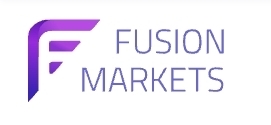Non-Fungible Tokens, or NFTs, have become a hot topic in the digital realm, capturing the attention of artists, collectors, investors, and technology enthusiasts alike. These unique digital assets have revolutionized the concept of ownership by leveraging blockchain technology. In this article, we will delve into the world of NFTs, exploring their definition, characteristics, and the underlying technology that makes them possible. Additionally, we will examine the various use cases of NFT, from digital art and collectibles to the gaming industry, while also considering the challenges and concerns surrounding this emerging market. Get ready to dive into the fascinating world of NFT and unlock the secrets behind their growing popularity. However, See where you can Mint your art value today.
What are NFTs?
NFTs, short for Non-Fungible Tokens, have been making quite the buzz lately. But what exactly are they? Well, think of them as digital certificates of authenticity that prove the uniqueness and ownership of a certain asset. These assets can be anything digital, like artwork, music, videos, virtual real estate, or even tweets.
The Rise of NFTs
The popularity of NFTs has skyrocketed in recent years, with artists, celebrities, and even athletes hopping on the bandwagon. They offer a new way for creators to monetize their work and for collectors to own a piece of digital history. It’s like the digital equivalent of a trading card or a collector’s item, but with a modern twist.
Understanding the Concept of Non-Fungible Tokens
Distinguishing NFTs from Cryptocurrencies
Let’s clear up a common confusion: NFTs are not the same as cryptocurrencies like Bitcoin or Ethereum. While cryptocurrencies are fungible, meaning one unit can be exchanged for another identical unit, NFT are unique and cannot be exchanged on a one-to-one basis. Each NFT has its own distinct value and attributes.
Key Characteristics of NFTs
There are a few important features that make NFTs stand out. First, they are indivisible, meaning they cannot be divided into smaller units. Second, they are immutable, thanks to their underlying technology called blockchain. Once an NFT is created and recorded on the blockchain, its information cannot be altered. Lastly, NFT have provable ownership, making it easy to verify who owns a specific digital asset.
How NFTs Work: Technology and Blockchain
The Role of Blockchain in NFTs
Blockchain technology plays a crucial role in the world of NFTs. It provides a secure and transparent way to authenticate and record transactions. Each NFT has a unique digital signature that is stored on the blockchain, ensuring its provenance and preventing fraud or duplication.
Smart Contracts and NFTs
Smart contracts, which are self-executing contracts with predefined terms and conditions, are another important component of NFT. They allow creators to set rules and conditions for their digital assets, such as royalties or automatic payments when the asset is resold. Smart contracts ensure that creators are fairly compensated even as their assets change hands in the future.
Exploring the Various Use Cases of NFT
NFTs in Digital Art and Collectibles
One of the most popular use cases of NFTs is in the world of digital art and collectibles. Artists can now sell their digital creations directly to collectors, eliminating the need for intermediaries. And collectors can proudly own a unique piece of art that can be easily transferred and verified without the hassle of physical ownership.
NFTs in Music and Entertainment
Musicians and entertainers have also embraced NFTs as a way to engage with their fans and monetize their work. They can release exclusive music tracks, concert tickets, or even virtual experiences as NFTs. This allows artists to connect with their audience on a deeper level and provide unique and memorable experiences.
NFTs in Virtual Real Estate
Believe it or not, virtual real estate is a thing now, thanks to NFTs. People can buy, sell, and own virtual properties within online worlds or metaverses. It’s like owning a piece of land in a digital universe. Virtual real estate NFTs open up a whole new realm of possibilities for virtual communities, gaming, and even virtual businesses.So, whether you’re an artist looking to showcase your talent, a collector seeking something truly exclusive, or just intrigued by the fascinating world of digital assets, NFTs offer an exciting new frontier to explore. Just remember to buckle up and enjoy the ride!
NFTs in the Art World: Revamping Digital Ownership
Digitizing Art with NFTs
Picture this: you stumble upon a mesmerizing digital artwork by your favorite artist while scrolling through social media. You want to hang it on your virtual wall, but how can you truly own it? Enter NFTs. Non-Fungible Tokens are revolutionizing the art world by providing a way to create unique digital assets that can be bought, sold, and owned through blockchain technology. With NFTs, artists can now digitize their work, authenticate its originality, and sell it directly to collectors, all while preserving the value and uniqueness of each piece.
The Impact on Artists and Art Market
For artists, NFTs offer new opportunities to monetize their digital creations. Through the sale of NFTs, artists can receive a portion of the profits every time their artwork is sold in the secondary market.
This means that as an artist’s reputation grows, they can potentially generate recurring income from their past works. Additionally, NFTs eliminate the need for intermediaries like galleries or auction houses, allowing artists to connect directly with their audience and retain more control over their creations.
The art market itself is also experiencing a seismic shift. NFTs have democratized the art world by providing access to digital art for a wider audience. Anyone with an internet connection can participate in buying and collecting digital artworks, breaking down geographical barriers and opening up new possibilities for artists and collectors alike.
NFTs and the Gaming Industry: Revolutionizing Virtual Assets
NFTs in In-Game Items and Skins
Gaming enthusiasts know the thrill of acquiring rare in-game items and skins. These virtual assets are now being transformed into NFTs, allowing players to truly own and trade them outside of the game environment. With NFTs, gamers have more control over their digital possessions, and the value of these items is no longer confined to a single game. Collectors can buy, sell, and showcase their coveted virtual items across different platforms and games, adding a new dimension to the gaming experience.
The Potential of Play-to-Earn Models
NFTs are also paving the way for play-to-earn models in the gaming industry. Imagine earning real-world value for your time and skills spent in a virtual world. With NFTs, players can monetize their in-game achievements, characters, and items, creating opportunities for individuals to make a living through gaming. This emerging trend has the potential to disrupt traditional notions of work and income, blurring the lines between play and work.
The Potential of NFT in Collectibles and Memorabilia
NFTs for Sports Memorabilia
Sports fans have long cherished physical memorabilia like jerseys, trading cards, and autographed items. NFTs now offer a digital alternative that combines the thrill of collecting with the security of blockchain technology. With NFTs, sports organizations and athletes can create unique digital collectibles that fans can own, trade, and display, preserving the sentimental and monetary value associated with sports memorabilia.
NFTs for Rare Collectibles and Trading Cards
Remember those childhood sticker collections or trading card obsessions? NFTs bring a modern twist by turning these physical collectibles into unique digital assets. From vintage trading cards to iconic movie posters, NFTs offer collectors a new way to engage with their favorite memorabilia. The scarcity and traceability provided by blockchain technology add an extra layer of authenticity and value to these cherished items.
Challenges and Concerns Surrounding NFTs
Environmental Impact of NFTs
While NFTs offer exciting possibilities, concerns have been raised regarding their environmental impact. The process of creating and trading NFTs requires significant energy consumption, primarily due to the energy-intensive nature of blockchain technology. As the popularity of NFTs grows, it is essential for developers and platforms to explore more sustainable alternatives to mitigate these environmental concerns.
Legal and Copyright Issues

Just like with any emerging technology, legal and copyright issues pose challenges to the widespread adoption of NFTs. Determining ownership and rights to digital assets can be complex, especially when it comes to verifying the authenticity and originality of the underlying work. Clear frameworks and regulations need to be established to protect the interests of artists, collectors, and other stakeholders involved in the NFT ecosystem.
In conclusion, NFTs have opened up a new frontier for digital ownership and creativity. With their ability to transform intangible assets into unique and verifiable digital entities, NFTs have sparked a revolution in various industries, including art, gaming, and collectibles. However, as with any emerging technology, there are challenges to address, such as environmental impact and legal concerns.
Despite these challenges, the potential of NFTs to reshape the way we perceive and interact with digital assets is undeniable. As the world continues to embrace this innovative technology, it will be fascinating to witness the evolution and future possibilities of NFTs.
FAQ
1. What exactly is a Non-Fungible Token (NFT)?
A Non-Fungible Token (NFT) is a type of digital asset that represents ownership or proof of authenticity for a unique item or piece of content. Unlike cryptocurrencies such as Bitcoin or Ethereum, which are fungible and interchangeable, each NFT possesses distinct characteristics, making it one-of-a-kind.
2. Can anyone create or sell NFTs?
Yes, in theory, anyone can create and sell NFTs. However, the process typically involves using a blockchain platform or marketplace that supports NFTs. These platforms ensure the security, authenticity, and traceability of the NFTs being created and traded. Start creating NFTs with as low as 0.000005BNB or just network fees.
3. How do NFTs leverage blockchain technology?
NFTs leverage blockchain technology by utilizing smart contracts, which are self-executing contracts with predefined rules. These smart contracts enable the creation, ownership, and transfer of NFTs by recording the transaction details on a decentralized blockchain network, providing transparency and ensuring the scarcity and authenticity of the digital assets.
4. Are there any concerns regarding the environmental impact of NFTs?
Yes, the environmental impact of NFTs has raised concerns. Most NFTs are created and traded on blockchain networks that rely on energy-intensive consensus algorithms like proof-of-work. The energy consumption associated with these networks has led to discussions around sustainability and the carbon footprint of NFTs. However, efforts are being made to explore and adopt more eco-friendly alternatives, such as blockchain networks that use proof-of-stake consensus algorithms.




